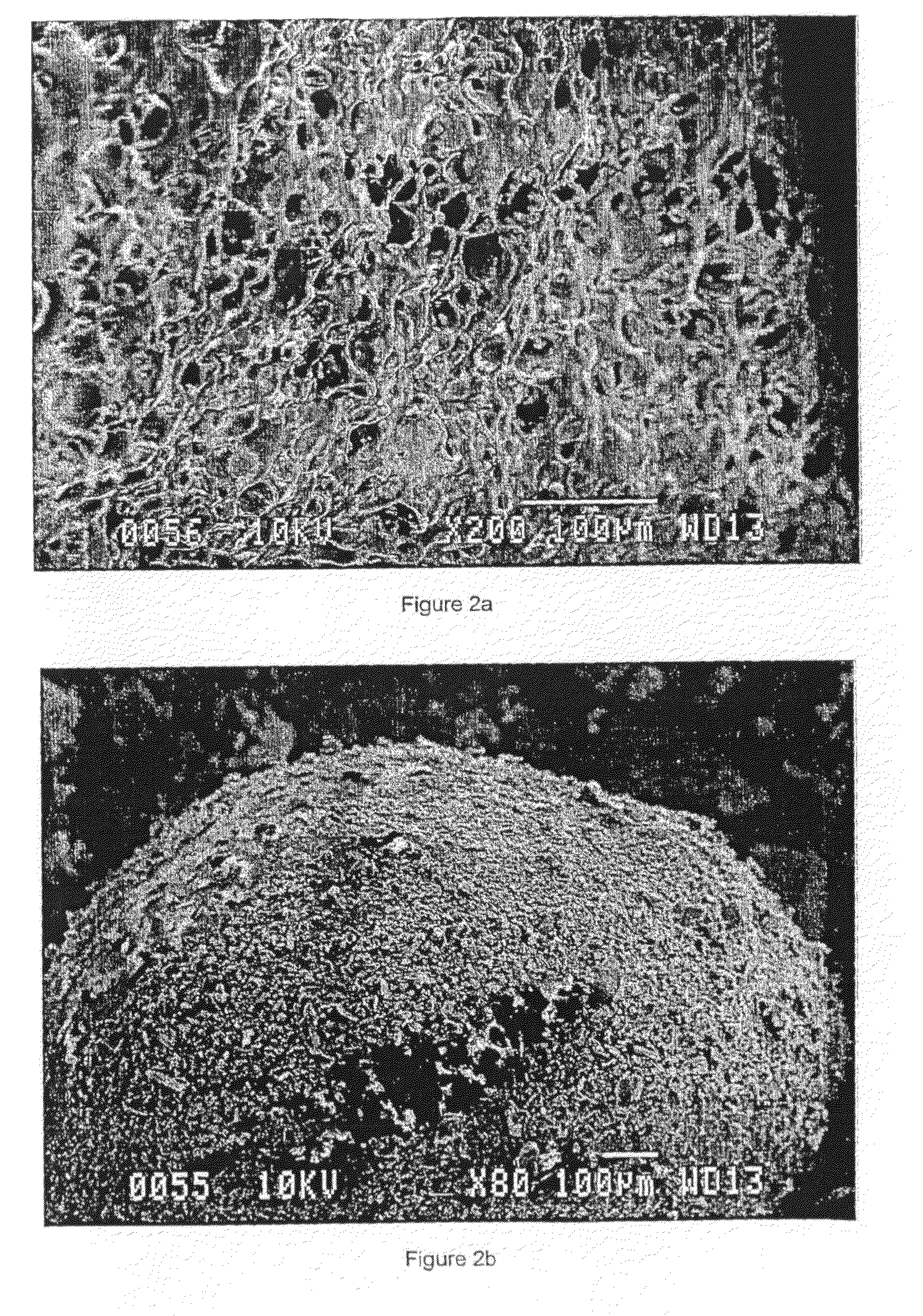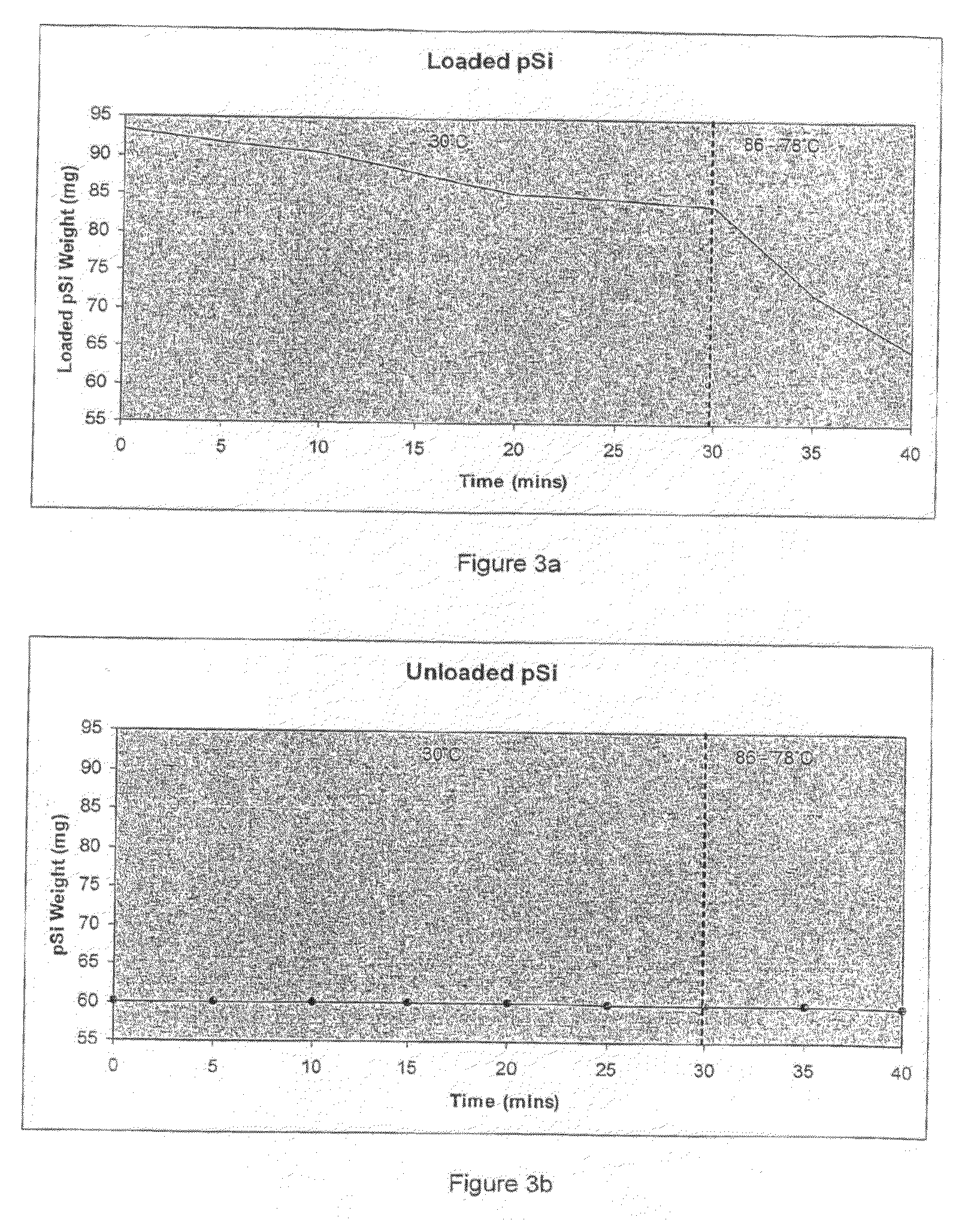Food Comprising Silicon
a technology of silicon and food, applied in the field of food comprising silicon, can solve the problems of many encapsulants bearing little resemblance, and achieve the effect of high porosity
- Summary
- Abstract
- Description
- Claims
- Application Information
AI Technical Summary
Benefits of technology
Problems solved by technology
Method used
Image
Examples
example 1
High Surface Area Silicon Fabrication
[0100]The fabrication of high surface area silicon powders with equipment that is scaleable to high throughput is demonstrated by Example 1.
[0101]Metallurgical grade silicon of purity 99.1 wt % with major impurities Fe (0.48 wt %) Al (0.19 wt %) and Ca (0.07 wt %) and commercially available in micronised form, with a particle size distribution of d10=1.40 μm, d50=6.19 μm and d97=42.37 μm, was used. The dry powder was subjected to high energy wet milling in a Hosokawa Alpine 90 AHM cylindrical ball mill. The grinding media was zircon oxide (diameter 0.4-0.7 mm) with a silicon carbide lining. Circulation grinding was used. The drive motor was run at 2.2 kW and the mill volume at 0.25 litres. Runs A1 and A2 used isopropanol (IPA) as the liquid carrier. For Runs B1-B3, the grinding of the silicon was carried out in water. Table 1 summarises the milling conditions and particle size distribution characteristics of the particles produced.
TABLE 1MillSoli...
example 2
Stability in Food and Drink
[0106]The stability of porous silicon was tested in a range of foods and drinks. Tests were carried out at 5° C. and 18° C. which were taken to be representative of refrigerated and room temperature conditions. Samples A and B were prepared. Sample A is a porous silicon sample possessing a porosity of 70 vol % (+ / −10%), and a thickness of 0.631 μm (+ / −0.02 μm) on non-porous bulk silicon. Sample A was prepared via the anodisation, under constant current density of 100 mA / cm2 for 10 seconds, of a non-porous bulk silicon sample. The electrolyte comprised equal volumes of 40 wt % HF and MeOH and the p+ silicon wafer had a resistivity of 5-20 mΩcm.
[0107]Sample B is a porous silicon sample possessing a porosity of 75 vol % (+ / −5%), and a thickness of 3.531 μm (+ / −0.02 μm). Sample B possesses a 200 nm thick outer region of 54 vol % (+ / −10%) porosity. Sample B was prepared via the anodisation, under varying current density of 5 mA / cm2 for 30 seconds followed by 50...
example 3
[0109]Metallurgical grade silicon microparticles possessing a d50 of 10 μm are partially porosified via a stain-etching method in an HF based solution to provide a high density of pores in the range of 5 to 50 nm diameter. Fish oil, ranging in an amount of 10 wt % to 60 wt % of the silicon is incorporated via the action of capillary flow which may optionally be in the presence of additional hydrostatic pressure.
PUM
 Login to View More
Login to View More Abstract
Description
Claims
Application Information
 Login to View More
Login to View More - R&D
- Intellectual Property
- Life Sciences
- Materials
- Tech Scout
- Unparalleled Data Quality
- Higher Quality Content
- 60% Fewer Hallucinations
Browse by: Latest US Patents, China's latest patents, Technical Efficacy Thesaurus, Application Domain, Technology Topic, Popular Technical Reports.
© 2025 PatSnap. All rights reserved.Legal|Privacy policy|Modern Slavery Act Transparency Statement|Sitemap|About US| Contact US: help@patsnap.com



